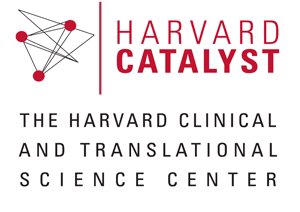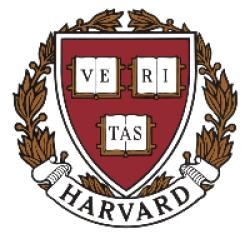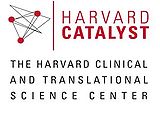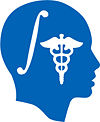Difference between revisions of "Collaboration:Harvard CTSC"
| Line 83: | Line 83: | ||
===97th Annual Meeting of the Radiological Society of North America (RSNA 2011), Chicago IL=== | ===97th Annual Meeting of the Radiological Society of North America (RSNA 2011), Chicago IL=== | ||
| − | + | *[[CTSC:TTiC.RSNA2011|3D Interactive Visualization of DICOM images]] | |
| − | |||
| − | |||
| − | + | *[[CTSC:TTiC.RSNA2011|Quantitative Medical Imaging for Clinical Research and Practice]] | |
| − | * | ||
| − | |||
| − | |||
| − | |||
| − | |||
| − | |||
| − | |||
| − | |||
| − | |||
| − | |||
| − | |||
| − | |||
| − | |||
| − | |||
Technological breakthroughs in medical imaging hardware and the emergence of increasingly sophisticated image processing software tools permit the visualization and display of complex anatomical structures with increasing sensitivity and specificity. This workshop will begin with an introductory presentation of state-of-the-art, clinical examples of quantitative imaging biomarkers for diagnosis and clinical trial outcome measures. Cases from multiple imaging modalities and from multiple organ systems will be highlighted to illustrate the depth and breath of this field. Participants will then be led through a series of tutorials on the basics of viewing and processing DICOM volumes in 3D using 3D SLICER (www.SLICER.org). Specific hands-on demonstrations will focus on basic use of 3D Slicer software, quantitative measurements from PET/CT studies, and volumetric analysis of meningioma. | Technological breakthroughs in medical imaging hardware and the emergence of increasingly sophisticated image processing software tools permit the visualization and display of complex anatomical structures with increasing sensitivity and specificity. This workshop will begin with an introductory presentation of state-of-the-art, clinical examples of quantitative imaging biomarkers for diagnosis and clinical trial outcome measures. Cases from multiple imaging modalities and from multiple organ systems will be highlighted to illustrate the depth and breath of this field. Participants will then be led through a series of tutorials on the basics of viewing and processing DICOM volumes in 3D using 3D SLICER (www.SLICER.org). Specific hands-on demonstrations will focus on basic use of 3D Slicer software, quantitative measurements from PET/CT studies, and volumetric analysis of meningioma. | ||
| Line 120: | Line 104: | ||
*Location: McCormick Place, Chicago, Illinois | *Location: McCormick Place, Chicago, Illinois | ||
| − | + | *[[CTSC:TTiC.RSNA2011|Lifecycle of an Imaging Biomarker: From Validation to Dissemination]] | |
The '''Lifecycle of an Imaging Biomarker: From Validation to Dissemination''' course is offered by the Harvard Catalyst Clinical Translational Science Award (CTSA) Imaging Program in collaboration with the UT Southwestern CTSA Program | The '''Lifecycle of an Imaging Biomarker: From Validation to Dissemination''' course is offered by the Harvard Catalyst Clinical Translational Science Award (CTSA) Imaging Program in collaboration with the UT Southwestern CTSA Program | ||
Revision as of 13:56, 30 June 2011
Home < Collaboration:Harvard CTSCHarvard Catalyst | The Harvard Clinical and Translational Science Center, Imaging Consortium Workspace
| Welcome! These wiki pages are meant to encourage quick and efficient communication among the Harvard Catalyst Imaging Consortium and the broader Harvard Catalyst community. We welcome interested visitors from other CTSC and the medical imaging community in general. If you are interested in an introduction to the Harvard Clinical and Translational Science Center, please go to our main web page: Harvard Catalyst. | ||

|

|

|
Mission statement
The Imaging Consortium:
- provides expert consultation to assist clinical and translational investigators in the planning and design of medical imaging research.
- educates about both general and current state of the art medical imaging and image processing capabilities. The courses are designed to better acquaint clinicians and scientists with the tools and technologies available in this important field.
- guides the CTSC participants about available resources in the use of imaging as part of clinical translational research.
- develops, through the Harvard Catalyst Medical Imaging Informatics Bench to Bedside Initiative (mi2b2) and cross-institutional harmonization efforts, medical imaging informatics to support the clinical and translational research community and enable current and future large-scale medical image data exploration.
Key Personnel
| Sites | Imaging Consortium Personnel |

|
Bruce Rosen, Director Randy Gollub, Co-Director Gordon J. Harris, Consultant William Hanlon, Consultant |
| Robert Lenkinski, Consultant Ivan Pedrosa, Consultant | |
| Clare Tempany, Consultant Ron Kikinis, Consultant Charles Guttmann, Consultant Todd Perlstein, Consultant Gordon Williams, PI for CTSC Translational Technologies | |
| Stephan Voss, Consultant Simon Warfield, Consultant | |

|
Annick D. Van den Abbeele,Consultant Jeffrey Yap, Consultant and Director of Education |

|
Valerie Humblet, Medical Imaging Liaison Yong Gao, Imaging Informatics Architect |
Upcoming Events
Bi-Weekly Meetings
Tuesday (9:00- 10:00 AM), call: 1-866-890-3820
- July 12, 2011 face-to-face
- July 26, 2011 t-con
Education
- fMRI lecture series: one-hour lectures designed to highlight cutting edge clinical research in the field of fMRI. Topics will cover image acquisition, image processing and image management.
- Brigham and Women's Hospital, location: tbd, time: tbd
- BIDMC, location: tbd, time: tbd
- MIT, location: tbd, time: tbd
- Children's Hospital, location: tbd, time: tbd
- Harvard University, location: tbd, time: tbd
- MGH, location: tbd, time: tbd
- McLean, location: tbd, time: tbd
- Intensive training in fMRI: This full-day course focuses on the principles and practices of fMRI in clinical research
- LMA, location: tbd, time: tbd
- MGH, location: tbd, time: tbd
- Imaging of Tumor Angiogenesis: This full-day course summarizes the current status of tumor angiogenesis imaging with SPECT, PET, molecular MRI, targeted ultrasound, and optical techniques
- HMS, location: tbd, time tbd
97th Annual Meeting of the Radiological Society of North America (RSNA 2011), Chicago IL
Technological breakthroughs in medical imaging hardware and the emergence of increasingly sophisticated image processing software tools permit the visualization and display of complex anatomical structures with increasing sensitivity and specificity. This workshop will begin with an introductory presentation of state-of-the-art, clinical examples of quantitative imaging biomarkers for diagnosis and clinical trial outcome measures. Cases from multiple imaging modalities and from multiple organ systems will be highlighted to illustrate the depth and breath of this field. Participants will then be led through a series of tutorials on the basics of viewing and processing DICOM volumes in 3D using 3D SLICER (www.SLICER.org). Specific hands-on demonstrations will focus on basic use of 3D Slicer software, quantitative measurements from PET/CT studies, and volumetric analysis of meningioma. The course is offered in collaboration with the Harvard Catalyst Clinical Translational Science Award (CTSA) Imaging Program and the Johns Hopkins Institute for Clinical and Translational Research.
Instructors
- Author/Presenter: Katarzyna J. Macura MD, PhD
- Author/Presenter: Valerie Humblet PhD
- Author/Presenter: Wendy Plesniak PhD
- Author/Presenter: Ron Kikinis MD
- Author/Presenter: Randy L. Gollub MD, PhD
Logistics
- Date: Sunday, 11/27, 2011
- Time:11:00am-12:30pm
- Location: McCormick Place, Chicago, Illinois
The Lifecycle of an Imaging Biomarker: From Validation to Dissemination course is offered by the Harvard Catalyst Clinical Translational Science Award (CTSA) Imaging Program in collaboration with the UT Southwestern CTSA Program
Learning Objectives
- to present current directions of quantitative imaging as a biomarker in clinical trials.
- to review the steps involved in the integration of an imaging biomarker into a multi-center clinical trial (protocol development, scanner qualification, standardization of image acquisition, data management, quality assurance, central review and analysis, validation, dissemination)
- to discuss examples of quantitative imaging best practice in PET/CT, MRI and pediatric imaging.
Instructors
- Author/Presenter: Jeffrey Yap, PhD
- Author/Presenter: Robert Lenkinski, PhD
- Author/Presenter: Simon Warfield, PhD
Logistics
- Wednesday, 11/30, 2011
- Time: 4:30pm-6:00pm
- Location: McCormick Place, Chicago, Illinois
Back to NA-MIC Events
several education 97th Annual Meeting of the Radiological Society of North America (RSNA 2011), Chicago IL
Multicenter Clinical Trial working group
The objective of this group is the establishment of an infrastructure to support multi-center imaging projects.
Harvard Catalyst Medical Imaging Informatics mi2b2 initiative
On September 24, 2009, Harvard Catalyst was awarded an ARRA administrative supplement to enable clinical imaging data to be used for secondary research purposes.
Medical Imaging Informatics and Data Management
Use Cases and Development of Goals
MRI Compatible Physiological Monitoring System
Here you can find Information for users about the specifications of a monitoring system supported by Harvard Catalyst. There is also information about the LabChart software.
Past Events
2011 meetings
- June 28, 2011 t-con
- June 14, 2011 face-to-face
- May 24, 2011 face-to-face
- May 10, 2011 Meeting canceled
- April 26, 2011
- April 12, 2011
- March 22, 2011
- March 8, 2011
- February 22, 2011
- February 08, 2011 Face-to-face
- January 25, 2011 t-con
- January 11, 2011 Face-to-face
2010
2009
2008
JIRA system
We use JIRA to monitor our consultation requests. Here are some information for our consultants: links to the user guide, screenshots and the website
External imaging core collaborative efforts
The Harvard Catalyst Imaging Consortium integrates with national clinical and translational efforts through the CTSA Imaging Working Group and Steering Committee
Additional Resources

|
Biomedical Informatics Research Network BIRN |
BIRN Imaging Resources | BIRN Training Resources |

|
National Alliance for Medical Image Computing NA-MIC |
NA-MIC Resources | NA-MIC Training Resources |

|
Neuroimage Analysis Center NAC |
Resources | Training Resources |
The Harvard CTSC Imaging Consortium would like to thank its gracious host NA-MIC for providing communication tools to facilitate the rapid deployment of expertise in medical imaging acquisition, analysis and visualization to clinical translational investigators.
Back to NA-MIC External Collaborations